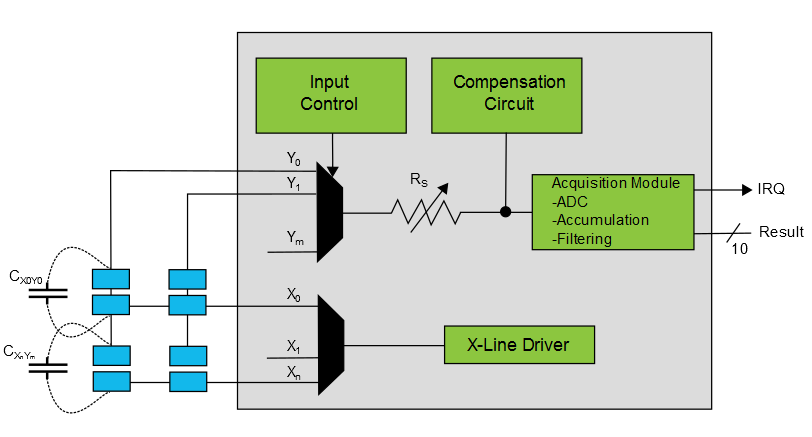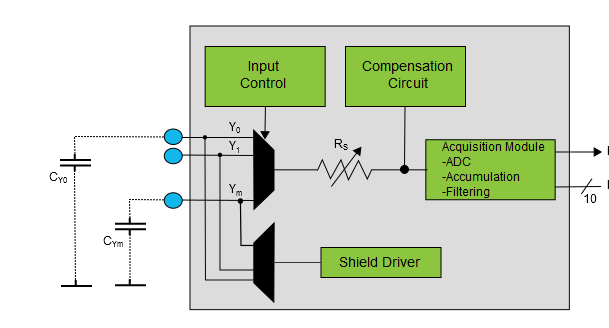The Peripheral Touch Controller (PTC) is a dedicated peripheral to detect a touch on capacitive sensors. The external capacitive touch sensor is typically formed on a PCB or a transparent substrate with a transparent or translucent material such as indium tin oxide (ITO) or PEDOT. The PTC allows the design of robust touch solutions with low-power, high-sensitivity for a large variety of sensors (buttons, sliders, wheels or 2D surfaces) without using external components.
The sensor electrodes are connected directly to the analog front end of the PTC through the I/O pins in the device. The dedicated hardware and the QTouch®software library allow low CPU utilization and faster development of touch solutions.
The PTC supports both mutual and self-capacitance sensors. In Mutual Capacitance mode, sensing is done using capacitive touch matrices in various X-Y configurations. The PTC requires one pin per X-line and one pin per Y-line:

